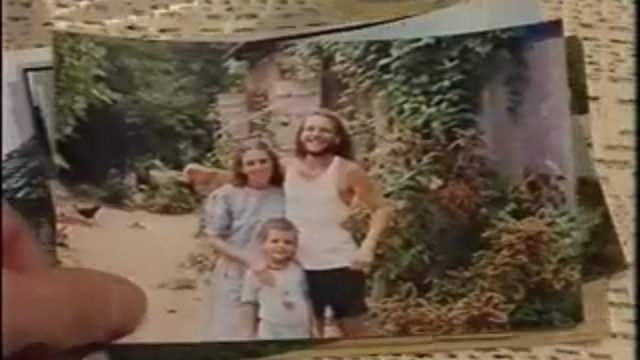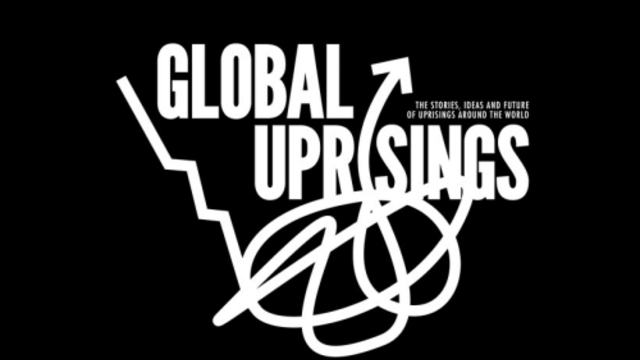Search results for 'Brazil'
Wikileaks releases secret Trans-Pacific Partnership Agreement (TPP) Investment Chapter
WikiLeaks releases today the "Investment Chapter" from the secret negotiations of the TPP (Trans-Pacific Partnership) agreement. The document adds to the previous WikiLeaks publications of the chapters for Intellectual Property Rights (November 2013) and the Environment (January 2014).
ReadIntroducing the Global Power Project
An investigative series produced by Occupy.com that aims to identify and connect the worldwide institutions and individuals who comprise today's global power oligarchy.
ReadThe Accenture Files
Investigation by the Expose Accenture, the Movement Research Unit, and the Progressive International
Today, the Progressive International, Expose Accenture and the Movement Research Unit release the Accenture Files, revealing the central role of the world’s largest consultancy in the global right-ward turn towards surveillance, exclusion, and strong-men: The Reactionary International.
Based on extensive fieldwork, interviews, and a comprehensive review of internal documents, our investigation demonstrates how Accenture has quietly embedded itself deep into the apparatus of security states worldwide, deploying its vast network of resources, wealth and technology to surveil entire populations, fuel the military-industrial complex and channel immense public wealth to private hands.
Tactical Media Connections
A public research trajectory tracing the legacies of Tactical Media and its connections to the present.
Under the working title 'Tactical Media Connections' the editors of the Tactical Media Files, David Garcia and Eric Kluitenberg have begun an extensive public research project that seeks to trace and develop the connections between the phenomenon of Tactical Media as it was identified in the early 1990s, not least through the renowned series of Next 5 Minutes festivals and conferences on Tactical Media (www.n5m.org - organised four times between 1993 and 2003), and current critical practices operating at the intersection of art, media, activism, technological experimentation and political contestation.
Tactical Media, the Second Decade
The tactical media concept originates in post-1989 Europe when political change coincided with a wild phase in thinking about media technologies. It was the decade when both artists and activists started to discover digital technologies on a massive scale. Prizes dropped and expectations rose to incredible heights.
ReadOntologies of the Wayward Drone - Part I
A Salvage Operation
On a clear evening in December, as the sun was setting over the Texas
horizon, a Mexican drone entered U.S. airspace and crashed into a
backyard in El Paso.
Introduction Sarai Reader 04: Crisis / Media
"The darkest, hottest place in hell waits for that repulsive angel choir
Which, at the hour when crisis strikes, sings equivocal, neutral songs".
Dante, Inferno, Canto III.
Cartography of Excess
Utopian ideas - like "Spaceship Earth" - are round, multidimensional, interrelated: their archetypal map is the Milky Way, the infinite constellations. But rational thinking is instrumental, linear, it distorts: and that's exactly the problem with the Mercator map, the most common world projection. Buckminster Fuller, inventor of the geodesic dome, created a "Dymaxion map" to undo those distortions. First the earth becomes a geometric figure, an isocahedron: its 20 triangles are then disjointed and laid flat, so the land masses radiate from a nexus in the north, without splitting continents or enlarging the polar regions.
The Watershed in Your Head - Mapping Anthropocene River Basins
Translating the abstraction—and banalities—of the Anthropocene into readable cartography has resulted in many past attempts that often ended up reproducing those same qualities. But, as Brian Holmes asserts in this essay, we seem to have found ourselves in a moment where collaboration, engagement, and new forms of knowledge exchange are breaking that deadlock. Tracing his own involvement with artistic practices that both engage with and attempt to represent a “political ecology,” Holmes explains how the evolving, collaborative cartographic practice that brought the "Mississippi. An Anthropocene River map" into being simultaneously reveals and interrogates the power structures of Anthropocence society.
ReadConference Report ‘The Society of Post-Control’
Summary of the extended conversation on the emergence, consequences, and activist responses to the concept of "post-control"
Report of the conference 'The Society of Post-Control', organised by Eric Kluitenberg and David Garcia, tying into the opening of the exhibition As If.
Electronic Markets & Activist Networks
The two very different types of digital formations examined here make legible the variable ways in which the socio-technical interaction between digital technology and social logics produce distinctive outcomes. These differences point to the possibility that networked forms of power are not inherently distributive, as is often theorized when the focus is exclusively on technical properties.
ReadThe Transborder Immigrant Tool: Violence, Solidarity and Hope in Post-NAFTA Circuits of Bodies Electr(on)/ic
This polyvocal, collectively authored paper describes the Transborder Immigrant Tool, a border disturbance art project developed by the Electronic Disturbance Theater. The paper outlines the motivations behind the tool and elaborates a notion of Science of the Oppressed as a methodology for developing locative media projects in solidarity with social movements. A shift is identified from Tactical Media to Tactical Biopolitics in contemporary media art. Walkingtools.net is also introduced as a platform for sharing technical information about locative media projects in order to create an ecology of projects. Poetic sustenance, part of the Transborder Immigrant Tool's functioning, is discussed in a context of Inter-American Transcendentalism.
ReadFinal Program: As If / Vox Populi / The Syrian Archive / The Society of Post-Control
Tactical Media Connections public program, Amsterdam January 20 - 22, 2017.
As part of the Tactical Media Connections public research trajectory tracing the legacies of Tactical Media and its connections to the present, a series of public events take place in Amsterdam between January 20 and 22, 2017. The public program includes an exhibition at Framer Framed in the Tolhuistuin cultural centre, opening on Friday January 20; a Meme Wars Lab workshop on Friday January 20; a public debate at Eye Filmmuseum on Saturday January 21, and a one day conference (‘The Society of Post-Control’) again at the Tolhuistuin on Sunday January 22.
Please find below a brief program overview, followed by a detailed description of the different parts of the public program.
The Lessons of 2011: Three Theses on Organisation
Republished with permission from metamute / Mute Magazine in London:
Moving beyond the conceptual polarisation of tight-knit vanguardist
parties and loose-tie virtual networks, Rodrigo Nunes sifts the residue
of last year's wave of revolts to produce a more nuanced picture of
organisational dynamics in the age of Web 2.0


